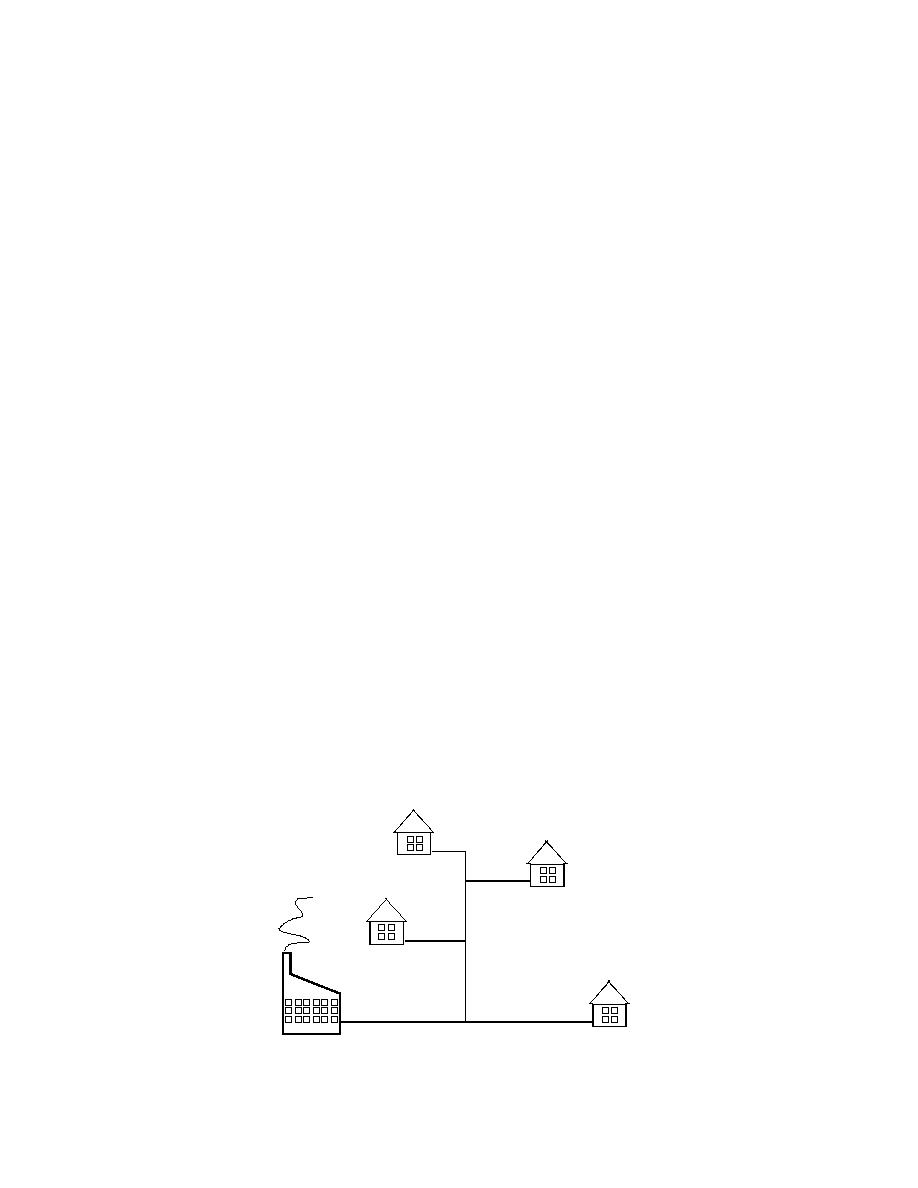
CHAPTER 6: A SIMPLE MULTIPLE-PIPEMULTIPLE-
CONSUMER EXAMPLE
To demonstrate our solution strategy, it's illustrative to use an example. The
example should be as simple as possible, but must at the same time include the
salient features of a realistic system. Thus, our simplistic system must include as a
minimum:
1. A heat generating plant.
2. At least one heat consumer.
3. A section of pipe feeding only other sections of pipe but no consumers.
4. A pipe junction feeding at least two consumers with unequal hydraulic
characteristics.
5. A pipe junction feeding only one consumer.
With these requirements in mind we will examine the system shown in Figure 14.
First, we define the physical parameters for the network. For each of the nodes,
we assign an arbitrary elevation and, in the case of the consumers, an arbitrary
maximum heat demand expressed as maximum flow mass rate at the design
condition. The maximum demands assigned to the consumers are representative of
multiple residential consumers or large commercial loads. The assigned values are
given in Table 5.
We will also need to assign lengths to the pipe segments between the nodes. In
Table 6 some arbitrary pipe segment lengths have been assigned. In addition, in
Table 6 the flows in each pipe segment and the elevation change for that segment
have been determined based on the data in Table 5.
Note that the maximum flow in each pipe segment has been assumed to be the
sum of all consumer flows downstream (again, in the supply line sense) from it.
Although this must be true at any instance during the operation of the system
because of simple conservation of mass principles, for design it may not be the most
appropriate assumption. Since the demand for heat by each consumer will most
likely not be completely coincident in time, the maximum aggregate demand of the
consumers will always be somewhat less than the total of all consumers' maximum
demands. This concept, called "demand diversity" is recognized by the district
heating industry and is sometimes accommodated to some extent in design calcu-
lations. If it's not included directly in the design, it has the effect of providing an
additional safety factor. While at this point we will make no effort to include the
effect of demand diversity in our solution methodology, it is important to make note
of it, since it's here that it would be introduced.
2
3
7
1
6
8
5
4
Plant
Figure 14. Simple multiple-pipemultiple-consumer system.
62



 Previous Page
Previous Page
